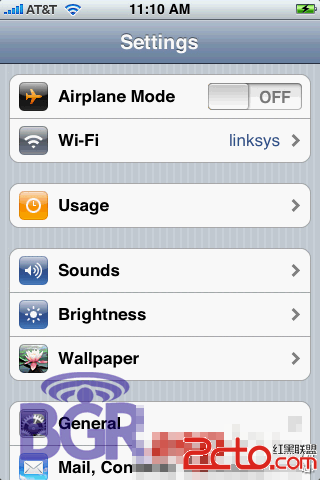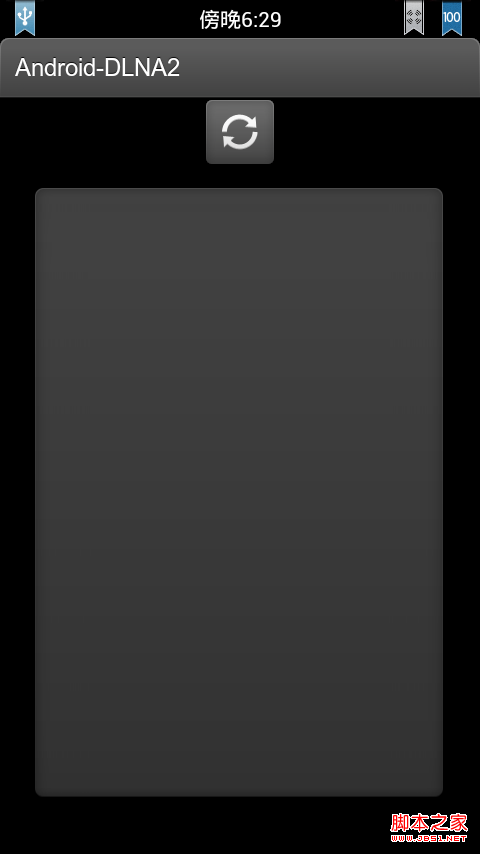編輯:Android開發實例
一提起廣播,我們首先想到的是收音機,當我們想要收聽某個廣播台時只需要將收音機的頻率調至廣播台所在的頻率即可!而Android中的廣播其實和收音機非常相似,不過它沒有所謂的頻率,它是由系統廣播一個事件,然後由其他滿足某一條件的程序接收並處理這個事件!!
要在Android中實現廣播,首先我們要在Manifest.xml文件中配置一個<receiver/>標簽,這個標簽必須有一個android:name屬性,值為繼承自BroadcastReceiver類的接收器類!這個標簽還有一個子標簽為<intent-filter/>,這個標簽很重要,是指定接收器需要接收哪種廣播。另外,還有配置一個用戶權限:<uses-permission/>,具體的值可以參考官方API文檔。
另外一個比較重要的步驟是必須有一個類繼承自BroadcastReceiver類,並復寫onReceiver方法,在該方法中處理接收到廣播後需要處理的事情!
下面來看一個具體的例子,有助於更好的理解廣播機制是怎麼一回事。
UI部分就不說了,Activity上就加了一個按鈕,點擊後發送廣播。接收器接收到廣播後在終端輸出一句話。
首先看AndroidManifest.xml文件:
<?xml version="1.0" encoding="utf-8"?>
<manifest xmlns:android="http://schemas.android.com/apk/res/android"
package="com.gufengxiachen.broadcast"
android:versionCode="1"
android:versionName="1.0">
<uses-sdk android:minSdkVersion="8" />
<application android:icon="@drawable/icon" android:label="@string/app_name">
<activity android:name=".BroadCast"
android:label="@string/app_name">
<intent-filter>
<action android:name="android.intent.action.MAIN" />
<category android:name="android.intent.category.LAUNCHER" />
</intent-filter>
</activity>
<receiver android:name=".MyBroadCastReceiver">
<intent-filter>
<action android:name="android.intent.action.EDIT"></action>
</intent-filter>
</receiver>
</application>
<uses-permission android:name="android.permission.RECEIVE_SMS"></uses-permission>
</manifest>
下面是Activity:
package com.gufengxiachen.broadcast;
import android.app.Activity;
import android.content.Intent;
import android.content.IntentFilter;
import android.os.Bundle;
import android.view.View;
import android.view.View.OnClickListener;
import android.widget.Button;
public class BroadCast extends Activity {
/** Called when the activity is first created. */
private Button bound =null;
private Button unbound =null;
private Button sendBroadCast =null;
private SecondBroadCastReceiver sbr =null;
public static final String SMS_ACTION="android.provider.Telephony.SMS_RECEVIER";
@Override
public void onCreate(Bundle savedInstanceState) {
super.onCreate(savedInstanceState);
setContentView(R.layout.main);
bound = (Button)findViewById(R.id.bound);
unbound = (Button)findViewById(R.id.unbound);
sendBroadCast = (Button)findViewById(R.id.sendBroadCast);
bound.setOnClickListener(new BoundListener());
unbound.setOnClickListener(new UnboundListener());
sendBroadCast.setOnClickListener(new SendBroadCast());
}
class SendBroadCast implements OnClickListener{
@Override
public void onClick(View v) {
// TODO Auto-generated method stub
Intent intent = new Intent(Intent.ACTION_EDIT);
BroadCast.this.sendBroadcast(intent);
}
}
class BoundListener implements OnClickListener{
@Override
public void onClick(View v) {
// TODO Auto-generated method stub
sbr = new SecondBroadCastReceiver();
IntentFilter filter = new IntentFilter();
filter.addAction(SMS_ACTION);
BroadCast.this.registerReceiver(sbr, filter);
}
}
class UnboundListener implements OnClickListener{
@Override
public void onClick(View v) {
// TODO Auto-generated method stub
BroadCast.this.unregisterReceiver(sbr);
}
}
}
最後是接收器類:
package com.gufengxiachen.broadcast;
import android.content.BroadcastReceiver;
import android.content.Context;
import android.content.Intent;
public class MyBroadCastReceiver extends BroadcastReceiver{
public MyBroadCastReceiver(){
}
@Override
public void onReceive(Context context, Intent intent) {
System.out.println("message receiver");
}
}
 基於Android實現ListView圓角效果
基於Android實現ListView圓角效果
本文演示如何在Android中實現ListView圓角效果。 無論是網站,還是APP,人們都愛看一些新穎的視圖效果。直角看多了,就想看看圓角,這幾年刮起了一陣陣的圓角設
 android panellistview 圓角實現代碼
android panellistview 圓角實現代碼
(效果如上圖所示) 其實很簡單: 比方說上面的容器是一個ListView 代碼如下: <ListView android:id=@+id/listView
 Android本地化
Android本地化
Android應用程序可以在許多不同地區的許多設備上運行。為了使應用程序更具交互性,應用程序應該處理以適合應用程序將要使用的語言環境方面的文字,數字,文件等。在本章中,我
 Android編程實現自定義進度條顏色的方法
Android編程實現自定義進度條顏色的方法
本文實例講述了Android編程實現自定義進度條顏色的方法。分享給大家供大家參考,具體如下: android 自定義進度條顏色 先看圖 基於產品經理各種自定義需